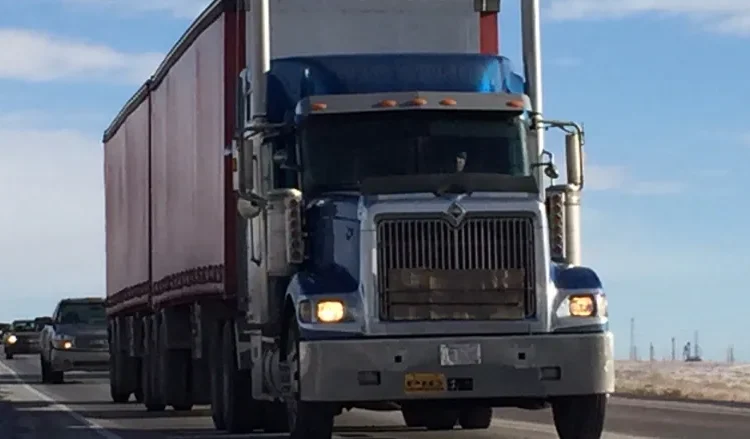Insurance companies are reluctant to insure new drivers, say driving trainers
Despite a provincial grant program to recruit new truck drivers, Alberta’s trucking industry is still struggling to fill thousands of vacant driver roles — and it’s in part due to challenges with insurance.
Harjeet Singh, owner of Alberta Truck Training and Driver Education, says he thinks the driver shortage is growing, but a lack of interest in truck driving isn’t the problem.
“You can earn equivalent money as a graduate engineer. So yes, people are interested and excited about getting into the industry,” said Singh.
Instead, he says the issue is that insurance companies are reluctant to insure new drivers. Without years of experience, students who graduate from his driving school are struggling to get insurance.
“When it comes to the insurance company, they do not want to take a chance.”
Because of that, some trucking companies don’t bother to hire new drivers, says Singh.
Dan Veno, lead trainer at Derek Brown’s Academy of Driving in Calgary, says this is a big problem, and it’s contributing to the ongoing driver shortage.
“Unless these companies start coming up with some kind of training programs for these new programs, it’s just going to get worse,” said Veno.
Mixed with a wave of retirements, young people who don’t want to get behind the wheel and people who would rather work from home, the trainers say the struggling trucking industry needs solutions now.
According to a statement from the office of Prasad Panda, Alberta’s minister of transportation, there are now approximately 4,800 truck driver vacancies in Alberta.
Impact of government program
To help with this shortage, nearly 1,000 Albertans have received grants from the Alberta government since 2020, under its Driving Back to Work grant program, according to the statement.
This year, 228 people have gone through the program, with a target of 600 trainees.
The three-year program aims to support unemployed Albertans completing mandatory entry level training to obtain a Class 1 licence.

Veno says the program has helped student drivers get better trained, with more hours behind the wheel.
He’s also seeing an increase in women registering for training from the program. In March, it was announced that an annual $3 million over three years was directed toward training more female drivers.
“We put through quite a few this year ourselves. Right now, in the class I just finished last week, we had two in there,” said Veno.
But Singh says limiting the program to unemployed Albertans means the trucking industry is missing out on many potential drivers.
“Every person who actually has the quality, has the education, has the caliper to get it … they are not eligible unless they are on EI,” said Singh.
That includes farmers who run their own equipment and farms, and may be interested in joining the trucking industry, he says.
He says it doesn’t help that the funding is limited, and first-come first-serve — especially when it goes to those who aren’t serious about the training, fail in two attempts and don’t put in their own money to get their license.
“So either they have to increase the funding so that everybody can afford it or they could have a program in place where anybody can apply, so it’s not first-come first-serve.”
Veno says in order to get more drivers on the roads, they also need to increase wages.
In the meantime, Singh says many trucking companies are getting in touch with him to run an agreement program where they can hire newly graduated drivers.
“People are desperate. It’s very hard to find a driver.”


